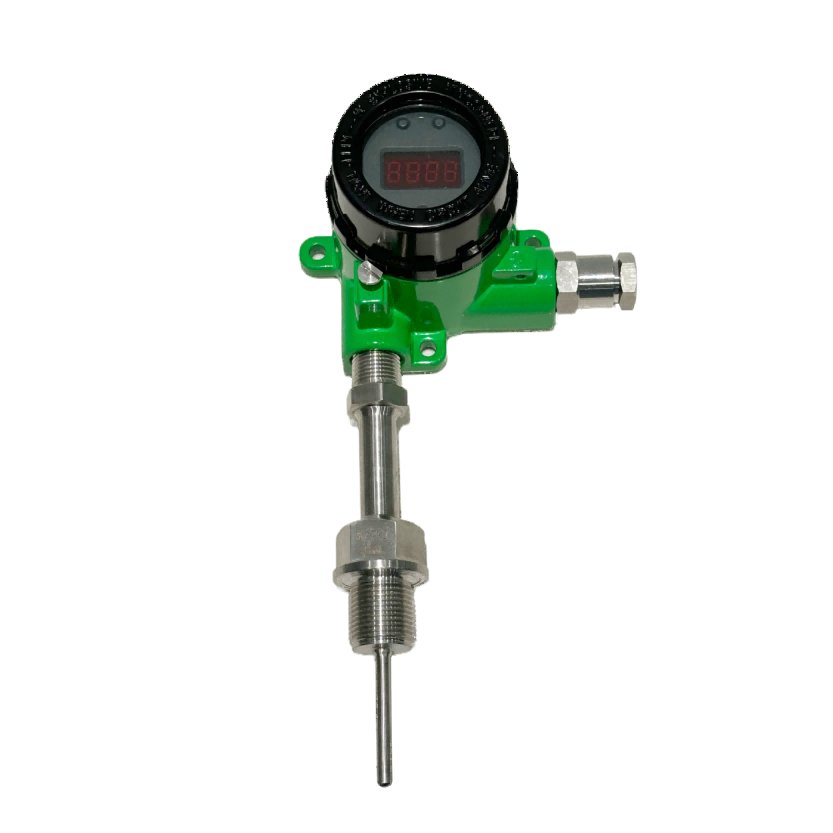Temperature transmitters are widely used in industrial production, scientific research experiments, and many other fields. Their main function is to convert the temperature signal measured by the temperature sensor into a standard electrical signal output for subsequent signal processing, transmission, and control. However, there are a wide variety of temperature transmitters on the market, with different technical parameters and performance characteristics. How to select a suitable temperature transmitter has become an important issue faced by many users. This article will elaborate on the key points and methods of selecting a suitable temperature transmitter from multiple aspects.
Determine the Measurement Requirements

(I) Measurement Temperature Range
First, it is necessary to clarify the temperature range that needs to be measured. Different industrial processes and application scenarios have very different temperature requirements. For example, in the food refrigeration industry, the measurement temperature range may be between - 20°C and 10°C; while in the steel smelting process, the temperature may be as high as 1000°C or more. If the measurement range of the selected temperature transmitter is too small, it may lead to the inability to accurately measure high or low temperature values in practical applications, or even damage the transmitter; if the measurement range is too large, although it can meet the measurement requirements, it may affect the measurement accuracy. Therefore, an appropriate temperature range must be determined according to the specific application to ensure that the transmitter can work stably and accurately within this range.
(II) Measurement Accuracy Requirement
Measurement accuracy is one of the key indicators for measuring the performance of a temperature transmitter. In some industries with extremely high requirements for temperature control, such as pharmaceuticals and semiconductor manufacturing, a small temperature error may lead to product quality problems or out-of-control production processes. For these applications with high-precision requirements, a temperature transmitter with a higher accuracy grade is required, and its accuracy can reach ± 0.1°C or even higher. In some occasions where the temperature accuracy requirement is relatively low, such as ordinary indoor temperature monitoring, a transmitter with an accuracy of about ± 1°C may be sufficient to meet the needs. Therefore, the required measurement accuracy should be determined according to the actual production process or monitoring purpose, avoiding excessive pursuit of high accuracy and increasing costs, or affecting the use effect due to insufficient accuracy.
Consider the Sensor Type
(I) Thermocouple
A thermocouple is a commonly used temperature sensor, which works based on the thermoelectric effect and is composed of two different metal materials. The advantages of thermocouples are a wide measurement temperature range, which can be as high as 1800°C or more, a fast response speed, and the ability to quickly sense temperature changes. It also has a simple structure, is durable, and is suitable for harsh environments such as high temperature and high pressure. For example, in the temperature measurement of industrial kilns, thermocouples can well adapt to the high-temperature environment and provide reliable temperature signals. However, the output signal of the thermocouple is nonlinear and requires linearization processing. Moreover, its measurement accuracy is relatively low, generally between ± 1°C and ± 5°C. In occasions where high accuracy is required, additional calibration or compensation measures may be needed.
(II) Resistance Temperature Detector (RTD)
The resistance temperature detector uses the characteristic that the resistance of a metal or semiconductor material changes with temperature to measure temperature. Common resistance temperature detectors include platinum resistance (Pt100, Pt1000, etc.) and copper resistance (Cu50, Cu100, etc.). The resistance temperature detector has a high measurement accuracy. The accuracy of the platinum resistance can reach ± 0.1°C to ± 0.3°C, and the output signal has good linearity, which is convenient for signal processing and transmission. It is suitable for medium and low temperature range measurement, generally between - 200°C and 850°C. It is widely used in medium and low temperature process processes in industries such as petrochemical and food processing. However, the response speed of the resistance temperature detector is relatively slow, and measurement lag may occur in a rapidly changing temperature environment. Moreover, it is easily affected by oxidation and other factors in a high-temperature environment, and its stability is not as good as that of a thermocouple.
Pay Attention to the Transmitter's Output Signal and Communication Protocol
(I) Output Signal Type
The output signal of a temperature transmitter usually includes 4 - 20mA current signal, 0 - 10V or 0 - 5V voltage signal, etc. The 4 - 20mA current signal is the most widely used output form in industrial field applications. It has strong anti-interference ability, and the signal attenuation is small during long-distance transmission, which can ensure the accuracy and stability of the measurement data. For example, in a large factory's distributed control system, the temperature transmitters at each temperature measurement point transmit the temperature data to the central control room for centralized processing and monitoring through 4 - 20mA signals. The voltage signal output is relatively simple and suitable for occasions where the transmission distance requirement is not high and the interference is small. When selecting the output signal type, factors such as transmission distance, on-site interference situation, and the input requirements of the subsequent receiving equipment need to be considered.
(II) Communication Protocol
With the continuous improvement of industrial automation levels, more and more temperature transmitters have digital communication functions, such as HART protocol, PROFIBUS - DP, MODBUS, etc. These communication protocols allow the transmitter to perform two-way data communication with the host computer, PLC or other intelligent devices. They can not only transmit temperature measurement values but also realize functions such as remote configuration, diagnosis, and calibration. For example, in an intelligent factory, through the HART protocol, engineers can remotely adjust the range, zero point and other parameters of the temperature transmitter in the central control room without going to the site for operation, which greatly improves work efficiency and the maintainability of the equipment. When selecting a temperature transmitter, if the application scenario requires remote monitoring and intelligent control, it is necessary to consider selecting a product that supports the corresponding communication protocol and ensure its compatibility with the existing control system.
Evaluate the Transmitter's Environmental Adaptability
(I) Protection Level
The installation environment of temperature transmitters is diverse, and some may be in humid, dusty or even corrosive gas environments. Therefore, it is necessary to evaluate the protection level of the transmitter according to the actual installation environment. The protection level is generally indicated by the IP code. For example, IP65 indicates protection against dust and the ingress of water jets, and IP67 indicates protection against dust and short-term immersion in water. In harsh environments such as outdoors and chemical workshops, a transmitter with a higher protection level should be selected to ensure that its internal circuits and sensors are not damaged by the external environment and to ensure the reliability and stability of the measurement.
(II) Explosion-Proof Performance
In industries such as petroleum, natural gas, and chemicals where there is a risk of explosion and fire, temperature transmitters must have explosion-proof performance. Explosion-proof temperature transmitters are specially designed and certified and can work safely in hazardous environments, preventing explosion accidents caused by internal faults or sparks of the transmitter. Common explosion-proof types include intrinsically safe type, flameproof type, etc. When selecting an explosion-proof temperature transmitter, it is necessary to determine a suitable product according to the classification of hazardous areas (such as Zone 0, Zone 1, Zone 2, etc.) and explosion-proof standards (such as ATEX, IECEx, etc.) and ensure that its explosion-proof performance complies with relevant regulations and safety requirements.
Consider Cost and Cost-Effectiveness
(I) Price Factor
The price of temperature transmitters varies greatly, ranging from dozens of yuan to thousands of yuan. Transmitters with a lower price may be relatively simple in function and performance and are suitable for occasions where the measurement requirements are not high and the budget is limited; while products with a higher price often have higher accuracy, better stability, more functions (such as multiple sensor inputs, intelligent diagnosis, etc.), and stronger environmental adaptability. When selecting, one should not only look at the price but also comprehensively consider multiple factors such as performance, function, and quality. Make a trade-off according to the actual needs and budget.
(II) Long-Term Operating Cost
In addition to the purchase price, the long-term operating cost of the temperature transmitter also needs to be considered. This includes maintenance cost, calibration cost, replacement cost, and production losses that may be caused by measurement errors. For example, although a high-precision temperature transmitter has a high purchase price, due to its high measurement accuracy and good stability, it may require fewer calibration times and maintenance work during long-term operation, thereby reducing the overall operating cost. Some low-quality transmitters may often have faults and require frequent replacement or repair, and may increase the scrap rate in the production process due to measurement errors, ultimately leading to a significant increase in the long-term operating cost. Therefore, when selecting a temperature transmitter, it is necessary to estimate and analyze its long-term operating cost and select a product with high cost-effectiveness.
Selecting a suitable temperature transmitter requires comprehensive consideration of multiple factors, including measurement requirements, sensor type, output signal and communication protocol, environmental adaptability, and cost and cost-effectiveness. Only by fully understanding these key points and making a detailed assessment and selection according to the specific application scenario and requirements can the selected temperature transmitter work accurately, stably, and reliably, provide effective temperature measurement and control services for industrial production, scientific research experiments, etc., and improve the operation efficiency and quality of the entire system.


